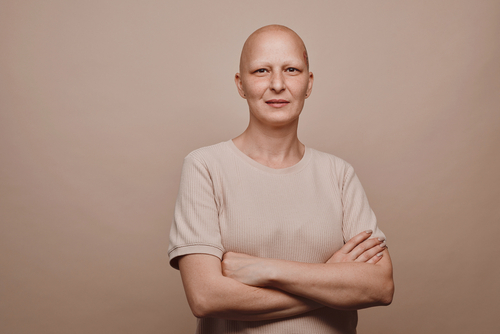
Lung cancer is the leading cause of cancer death for women in the United States. Women are exposed to unique risk factors, which remain understudied and may affect their care and outcomes.
In a review article, Narjust Florez, MD, and colleagues looked at unique features in epidemiology, risk factors, and biology of lung cancer in women, along with the social determinants of health, inequities in research, and biases. Their findings were reported in Clinical Lung Cancer [2024;25(1):1-8].
According to data from the Surveillance, Epidemiology, and End Results Program, 22% of women diagnosed with lung cancer from 2001 to 2014 in the United States had a 5-year survival rate, which is markedly lower than women with other cancers. Regarding race, the lowest relative survival rate was reported for Black women (19%) when compared with White women (22%) or those of other races (26%).
Tobacco use is a main risk factor for lung cancer. Data suggest that women are at higher risk of developing lung cancer compared with men, and the reasons are multifactorial. For example, women who use tobacco have higher levels of the lung enzyme CYP1A1 expression compared with men, and CYP1A1 levels are associated with lung cancer risk through its role in lung DNA adduct formation. The researchers also cited that the incidence of lung adenocarcinoma among nonusers of tobacco is rising, and patients are approximately two-and-a-half times more likely to be women. Particularly among women, stigma associated with lung cancer and tobacco use may result in delays in diagnosis.
“For the first time in history, young women are getting more lung cancer than young men, prompting reproductive and hormonal factor studies in lung cancer. Irrespective of sex differences, lung cancer appears to be a biologically different disease in women,” said the researchers.
Environmental risk factors, including cigarette smoking, second-hand tobacco exposure, air pollution, and radiation exposure also impact lung cancer in women. For women worldwide, the pooled prevalence of ever smoking is 28%, and nearly 20% of all women in the United States continue to smoke. Second-hand tobacco exposure disproportionally increases lung cancer risk for women compared with men. The researchers cited a study of patients with lung cancer without a history of tobacco exposure that showed 79% of women reported second-hand smoke exposure compared with 21% of men. This difference may be attributed to domestic partners who use tobacco or to workplace environments.
Indoor air pollution can affect lung cancer risk, and this risk is greater in women than men, potentially due to societal roles that mean women take on more indoor cooking responsibilities. Radiation exposure is also a well-known carcinogen. One study found that postmastectomy radiation therapy is linked with almost twice the risk of primary lung cancer in the ipsilateral lung, drawing attention to lung cancer risk in survivors of breast cancer.
The US Preventive Services Task Force guidelines for lung cancer recommend individuals aged 50 to 80 years with a 20 pack-year history of smoking undergo yearly screening with low-dose computed tomography scan. Yet one group analyzing patient-provider communication found that women were 32% less likely to report having a lung cancer screening discussion with their health care providers compared with men. Furthermore, non-Hispanic Black women were 32% less likely than men to be aware of a lung cancer screening test and have this discussion with their health care team.
“We hope future lung screening guidelines may incorporate sex-specific recommendations, considering that women possess a unique set of considerations when assessing lung cancer risk factors,” wrote the researchers.
Until recently, women have been underrepresented in clinical trials, and studies have shown a gender disparity in lung cancer clinical trial enrollment from 2000 to 2019. Furthermore, underrepresentation continues to be important for women aged 65 years and older and those of minority race/ethnicity. While many barriers to clinical trial enrollment apply to patients with cancer, the authors outlined gender-specific barriers for women, including increased time, financial, and opportunity costs in visiting clinics; traveling; and being away from family. Researcher- or sponsor-specific barriers are also factors and include gender-biased misconceptions that women are more difficult to recruit, less willing to participate in trials, and more difficult to work with.
Sex differences are seen in tolerability and response to therapy across different cancers and in lung cancer specifically. One study evaluating advanced non-small cell lung cancer showed that women had a greater number of symptoms related to toxicity, including nausea, vomiting, and neuropsychiatric and neurosensory deficits. “There is lack of prospective validation on the dose regimen and efficacy for women with lung cancer, which could impact the ability of health care teams to be fully informed when choosing medications and treatment protocols for patients, an occurrence that must be accounted for in future interventional trials,” noted the authors.
Addressing survivorship needs is crucial. Lung cancer has been associated with greater rates of depression, anxiety, and poorer quality of life, particularly for women. Gender differences in coping mechanisms of the disease also exist, which may shape treatment plans. Lung cancer treatment has been commonly associated with sexual dysfunction, one of the biggest sources of distress among women with lung cancer. Despite high prevalence, clinicians often fail to discuss sexual dysfunction with patients who live with lung cancer due to topical discomfort, lack of knowledge, or false beliefs of patient prioritization of sexual health.
“Women have more domestic responsibilities due to societal gender roles negatively affecting their lung cancer survivorship and capacity [to prioritize] health during cancer treatments. Further, evidence reveals sex differences in tolerability and response to therapy in lung cancer, though women continue to lack representation in lung cancer clinical trials, appropriate screening guidelines, and discussions of screening with their health care teams,” the researchers concluded. “Though additional research is needed prior to creating gender-based treatment approaches in lung cancer, a holistic approach is necessary, as environmental and societal factors directly affect women’s risk for lung cancer, lung cancer screening, and disease survivorship.”







 © 2025 Mashup Media, LLC, a Formedics Property. All Rights Reserved.
© 2025 Mashup Media, LLC, a Formedics Property. All Rights Reserved.